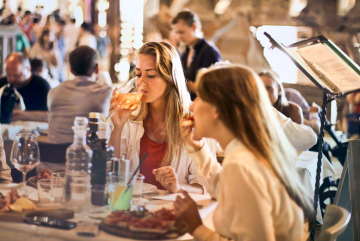The arrival of a baby is a moment of joy and transformation, but it also marks the beginning of a challenging and amazing journey of recovery for a woman. Postpartum recovery is a crucial phase in which a woman's body adapts to the changes that occur during pregnancy and childbirth. Join us as we explore the postpartum recovery process in detail, from the first days after delivery to the longest recovery period. We will examine how a woman looks and feels after giving birth, the challenges she may face, and the care needed for a full recovery.
Initial phases of recovery:
After childbirth, the woman experiences the so-called "immediate phases of recovery", which cover the first 6-12 weeks. During this time, the uterus contracts to return to its original size, the first lactations occur, and healing of the areas affected during childbirth begins, whether it is an episiotomy or a cesarean section. Hormonal fluctuations, postpartum bleeding (lochia), fatigue, and intense emotions are common characteristics of this stage.
Essential care in the immediate postpartum:
Attention to physical and emotional health is crucial during the first weeks. Women need to rest adequately, follow a balanced diet, and take care of their wounds if any. Postpartum consultation with healthcare professionals is essential to assess recovery and address any concerns. Breastfeeding also begins at this stage, which can be an emotional and challenging process that requires support and patience.
Changes in the body:
After childbirth, a woman experiences a series of changes in her body. The swelling gradually decreases, and the abdominal muscles begin to recover. However, it is common for the belly not to return to its original shape immediately. The skin may be lax, and stretch marks may be more noticeable. Weight loss varies for each woman, but focusing on a balanced diet and gradual exercise are key to a healthy recovery.
Recovery of the pelvic floor and abdominal muscles:
Pelvic floor recovery is essential after childbirth, as this muscle has experienced significant stress during pregnancy and childbirth. Kegel exercises and other specialized techniques can strengthen this area. The abdominal muscles also require attention. Abdominal exercises should be progressive and adapted to individual recovery. In some cases, physical therapy may be recommended to assist in the rehabilitation of these muscles.
Resumption of physical activity:
The gradual reintroduction of physical activity is an integral part of postpartum recovery. Gentle exercises, such as walking, swimming, and postpartum yoga, can begin after doctor approval. However, it is essential to listen to your body and not rush into intense activities. Returning to intense exercise, such as strength training or running, should be done gradually to avoid injury and allow the body to adapt.
Mental health care:
Mental health is as crucial as physical health in postpartum recovery. A woman can experience a wide range of emotions, from ecstatic joy to anxiety and postpartum sadness. Emotional support, whether from friends, family or professionals, is essential. Open communication about emotional challenges and self-care are critical aspects of this process.
The role of external support:
The role of external support in the postpartum recovery process is essential to help women go through this period of transition and adaptation to motherhood. This support can come from a variety of sources, including family, friends, health professionals, and community support groups.
First, the emotional support provided by family and close friends can be invaluable in providing comfort, understanding, and encouragement to women during difficult times. The simple act of listening and offering support can help reduce postpartum stress and anxiety, as well as strengthen family and friendship bonds.
Additionally, healthcare professionals, such as doctors, midwives, and counselors, play a crucial role in the postpartum recovery process by providing expert guidance, medical care, and resources to help women address physical and emotional challenges they may face.
Community support groups can also be an invaluable source of external support, providing a safe and supportive environment where women can share experiences, get practical advice and feel part of a supportive community of people who share their concerns and experiences. .
Long-term recovery:
As time passes, the woman experiences a more complete recovery. Breastfeeding, if it is a choice, can continue, and the body continues to adapt to hormonal changes. Muscle strength and tone improve over time, but each woman has her own recovery rate. Continued attention to nutrition, exercise, and mental health are key components to long-term recovery.
How a woman looks and feels after recovery:
After a successful recovery, a woman often experiences an increase in energy and vitality. Most immediate physical symptoms, such as postpartum bleeding and bloating, decrease significantly. Muscle toning improves, and many women find that their emotional well-being stabilizes. The belly, although it may not return exactly to its pre-pregnancy shape, generally shows a reduction in laxity. The ability to carry out daily activities and participate in the care of the baby is greatly improved.
Postpartum recovery is a transformational journey for women, encompassing both the physical and emotional aspects. From the immediate phases after childbirth to long-term recovery, each step is a crucial part of this process. Attention to mental health, external support and self-care are essential components for a woman to recover and flourish after giving birth. Every woman is unique, and her postpartum recovery journey is a personal narrative that deserves understanding, patience, and celebration. Postpartum recovery is not only the restoration of the body, but also the rebirth of a new phase of life, for both mother and baby.






